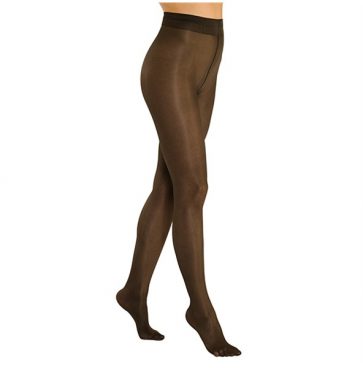Postual Tachycardia Syndrome – A Guide
Postural Tachycardia Syndrome (PoTS) is a medical condition that can cause dizziness, fainting and a racing heart when standing up quickly after lying or sitting down. It can have a major impact on daily life, including work and social activities.
Our straightforward guide explains how you can avoid and prevent symptoms of PoTS. We list important life style changes and explain how wearing compression hosiery during the day can help.
For PoTS, Daylong recommends:
What is Postural Tachycardia Syndrome (PoTS)?
PoTS is a condition in which the body’s response to a sudden change in position is abnormal. When you stand up after lying down, gravity draws blood down into the lower part of the body. In most healthy people, the blood vessels in the legs, hands and lower abdomen narrow to force more blood back up to the brain. If you have PoTS this doesn’t happen quickly enough. The brain is starved of oxygen very briefly, but this is enough to cause light-headedness, sweating, dizziness or even fainting. Your heart pounds to restore the normal blood supply to the brain.How to prevent Postural Tachycardia Syndrome (PoTS)
There is nothing you can do to prevent developing PoTS but if you do experience symptoms, you can take steps to reduce them. The first step is to see your GP to arrange for tests to formally diagnose the syndrome. In severe cases that do not improve with lifestyle changes, your doctor may prescribe drugs to lower your heart rate or to narrow your blood vessels. Most people avoid dizziness and fainting by being careful how quickly they move from lying down to standing up. Staying well hydrated is a good idea too as having a lower volume of blood in the body makes the symptoms much worse. You also need to take extra care when washing, as showering or bathing in hot water dilates the blood vessels in the lower body, reducing blood supply to the brain. Fainting in the bath or shower is extremely dangerous so bathing in warm rather than hot water and sitting in the shower is recommended.What causes Postural Tachycardia Syndrome (PoTS)?
PoTS is thought to occur because of a problem in the part of the nervous system that controls automatic functions such as breathing and heart rate. However, exactly why it develops in some people but not others is not really known. The condition is more common in teenagers after a growth spurt and affects more people with serious chronic illnesses such as multiple sclerosis, diabetes, autoimmune conditions and cancer. Pregnant women often experience PoTS but find that symptoms disappear once the baby is born. Symptoms of PoTS can appear in anyone from teenagers to people in early middle age. The syndrome is slightly more common in women than in men.Top tips to prevent Postural Tachycardia Syndrome (PoTS)
In severe cases, doctors can prescribe medication that can help although there is nothing specifically approved for the treatment of PoTS. Many people are able to control and prevent their symptoms using simple lifestyle changes in combination with wearing compression hosiery:- Stay well hydrated by drinking fluids, particularly water, throughout the day.
- Try not to stand in one position for long periods of time.
- Build up muscles in your legs by exercising: walking, jogging, swimming, rowing and gym exercises for the lower limbs are all good.
- Do not have very long and hot showers or baths as the heat dilates (widens) the blood vessels in the arms and legs. Wash quickly in warm water.
- Always get up from lying or sitting down slowly. After lying down, roll to a sitting position for a few minutes and then stand.
- Try raising the head of your bed so that you aren’t lying flat while asleep.
- Wear correctly fitted compression hosiery during the day as this prevents blood pooling in the legs. This is particularly important if your job or daily activities involve standing or sitting for long periods.


